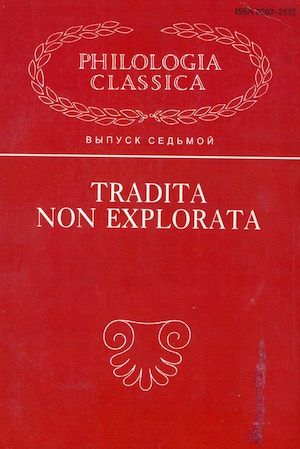О происхождении чтения saevos leones в XVI эподе Горация
Аннотация
The aim of the article is to explain the origin of the variant saevos in several related manuscripts of Horace (Epod. 16. 33; the adjective describes lions). Most manuscripts of two tradition-lines have ravos and flavos, the former being undoubtedly lectio difficilior. The variant saevos seems to be obviously secondary, and might have erected as a palaeographic error, as it was usually assumed, since this adjective can be an explanation neither for rāvus ‘yellow-grey’ (of animals’ body or eyes) nor for flavus ‘pale yellow’. Meanwhile it could be originally a margin-gloss, made as a commentary on ravus, if an early-medieval commentator understood it erroneously as răvus — ‘hoarse’. Both rāvus and răvus are quite rare and were confused already in the Late Antiquity (Paul. Fest. p. 283 M) and the author of the gloss may have made a note: «hoarse» meaning ‘fierce’.
Скачивания
Загрузки
Опубликован
Как цитировать
Выпуск
Раздел
Лицензия
Статьи журнала «Philologia Classica» находятся в открытом доступе и распространяются в соответствии с условиями Лицензионного Договора с Санкт-Петербургским государственным университетом, который бесплатно предоставляет авторам неограниченное распространение и самостоятельное архивирование.






